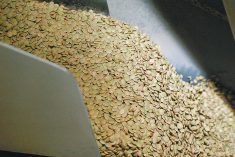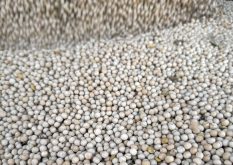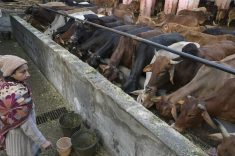Pulses too costly | Pulse Canada is working with the Indian government to help get pulses to poor citizens
India’s lower house of Parliament has approved a large food subsidy bill designed to address rampant starvation and malnutrition in that country.
The National Food Security Bill, 2013, will provide heavily subsidized food to two-thirds of the country’s 1.2 billion citizens.
Beneficiaries of the program will receive five kilograms of subsidized rice, wheat and coarse grains per month at a cost of two to five cents per kilogram, which is well below market rates.
Pulse Canada isn’t concerned that pulses have been excluded from the bill or about how an increased consumption of wheat, rice and coarse grains by the nation’s poor will affect pulse demand.
Read Also

Phosphate prices to remain high
Phosphate prices are expected to remain elevated, according to Mosaic’s president.
“We know that the highest per capita consumption of pulses in India isn’t at the low end of the economic pyramid,” said chief executive officer Gordon Bacon.
“Per capita consumption of pulses is higher with middle and upper class Indians. This isn’t anything new that the poorest of the poor in India haven’t been able to afford pulses.”
He said the Indian government is subsidizing rice, wheat and coarse grains because the country produces a surplus of those crops while pulses have to be imported.
The program is designed to meet the immediate basic caloric needs of the poor. It is not a program to address protein and micronutrient deficits in their diets, which is where pulses can play a role.
“You can’t make a critical comment of a government that’s doing its best to address starvation and malnutrition,” said Bacon.
“When people are dying of starvation, their first need is to have adequate calories for life.”
A section of the act mentions future diversification of the commodities covered, which leaves the door open to pulses being incorporated into the food security bill.
In the meantime, Pulse Canada will continue to work with the Indian government and food companies to try incorporating whole and fractionated pulses into the diets of India’s poor to address protein and micronutrient deficiencies.
The plummeting rupee is a far bigger concern for Canadian pulse exporters than India’s food security bill.
“It makes the importation of pulses more expensive and makes them even less affordable to the poor,” said Bacon.
The food security bill is expected to cost the Indian government about $4 billion per year. The state-run Food Corp. of India will administer the program through its network of 505,000 fair price shops.
The bill doesn’t specify how the beneficiaries of the program will be determined. An existing food security program sets the poverty line at people earning 50 cents a day in urban areas and 41 cents a day in rural areas.
The program is expected to help 75 percent of India’s rural population, or 625 million people, and 50 percent of its urban population, or 189 million people.
The bill needs to be passed by the upper house of Parliament and gain presidential assent before it becomes law.
















